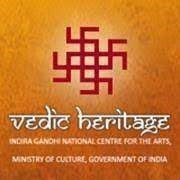Description

Disclaimer: Copyright infringement not intended
Context: Union Home Minister said the government was securing the knowledge in India’s ancient scriptures and manuscripts for the future through technology.
Details:
About the portal:
- It has been created by the Indira Gandhi National Centre for the Arts (IGNCA).
- The portal is a one-stop solution for common users and researchers seeking any information regarding Vedic heritage.
- It gives detailed information about oral traditions, textual tradition in form of published books/manuscripts, or implements
- The audio visual recording of four vedas have been uploaded on the Vedic Heritage portal.
- This portal has over 18 thousand mantras of the four vedas with a duration of over 550 hours.
.jpeg)
Objectives:
- With the help of this, the younger generation would be able to carry forward the knowledge and tradition of the Vedas and the Upanishads.
- The portal aims to communicate message enshrined in the Vedas.
- It will help common people to have a general understanding about the Vedas.
About IGNCA:
- The IGNCA comes under of Ministry of Culture.
- The IGNCA was launched on 19th November, 1985 by the late Prime Minister Shri Rajiv Gandhi.
- The elements – fire, water, earth, sky and vegetation – were brought together. Five rocks from five five major rivers – Sindhu, Ganga, Kaveri, Mahanadi and the Narmada (where the most ancient ammonite fossils are found) were composed into sculptural forms.
Aims & Objectives:
- To serve as a major resource centre for the arts, especially written, oral and visual source materials
- To undertake research and publication programmes of reference works, glossaries, dictionaries and encyclopaedia concerning the arts and the humanities
- To establish a tribal and folk arts division with a core collection for conducting systematic scientific studies and for live presentations.
- To provide a forum for a creative and critical dialogue through performances, exhibitions, multi-media projections, conferences, seminars and workshops between and amongst the diverse arts, traditional and cotemporary
- To foster dialogue between arts and current ideas in philosophy, science and technology, with a view toward bridging the gap in intellectual understanding between modern sciences and arts and culture
- To evolve models of research programmes and arts administration more portinent to the Indian ethos
- To elucidate the formative and dynamic factors in the complex web of interactions between diverse social strata, communities and regions
- To promote an network with national and international institutions; and
- To conduct related research in the arts, humanities and culture.

The Four Vedas:
- The Vedas are considered the oldest Hindu texts.
- Each Veda has four subdivisions – the Samhitas (mantras and benedictions), the Aranyakas (text on rituals, ceremonies, sacrifices and symbolic-sacrifices), the Brahmanas (commentaries on rituals, ceremonies and sacrifices), and the Upanishads (texts discussing meditation, philosophy and spiritual knowledge)
- Vedas are śruti ("what is heard"), distinguishing them from other religious texts, which are called smṛti ("what is remembered").
- Hindus consider the Vedas to be apauruṣeya, which means "not of a man, superhuman" and "impersonal, authorless," revelations of sacred sounds and texts heard by ancient sages after intense meditation.
The Rig-Veda:
- The most important and, according to scholars, oldest of the Vedas.
- It is divided into ten books (called mandalas) and has 1028 hymns in praise of various deities. These include Indra, Agni, Vishnu, Rudra, Varuna, and other early or “Vedic gods.”
- It also contains the famous Gayatri mantra and the prayer called the Purusha Shukta (the story of Primal Man).
The Yajur-Veda: A priestly handbook for use in the performance of yajnas (sacrifices) It is divided into two sections, the earlier “black” and the more recent “white.”
Sama-Veda: This consists of chants and melodies to be sung during worship and the performance of yajna.
Atharva-Veda: Contains hymns, mantras and incantations, largely outside the scope of yajna.
Four types of composition:
- The first two divisions relate to the performance of sacrificial rituals, whereas the second pair consists of philosophy.
- The Samhitas – literally “collections,” in this case of hymns and mantras. They form the Veda proper.
- The Brahmanas – prose manuals of ritual and prayer for the guiding priests. They tend to explain the Samhitas. They also contain early versions of some stories.
- The Aranyakas – literally “forest books” for hermits and saints. They are philosophical treatises.
- The Upanishads – books of philosophy, also called “Vedanta,” the end or conclusion of the Vedas.
Supplementary literature:
- The Vedangas, which expound the sciences required to understand and apply the Vedas.
- The Upavedas (usually considered smriti) which deal with the four traditional arts and sciences. The Four Upavedas (following the Vedas) explain arts and sciences
- Ayur-veda (medicine)
- Gandharva-veda (music and dance)
- Dhanur-veda (warfare)
- Shilpa-veda (architecture)
|
PRACTICE QUESTION
Q) Discuss the significance of Vedic learnings in contemporary times. Enumerate the various steps taken by the government in this regard. (150 words)
|

https://epaper.thehindu.com/ccidist-ws/th/th_delhi/issues/29780/OPS/GKHB1BBDG.1+GN3B1C805.1.html
















